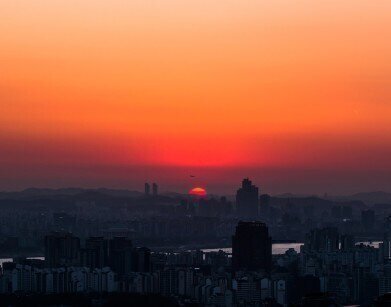Air Clean Up
Has South Korea Joined the World’s Pollution Hotspots?
Apr 01 2017
The latest figures from global air quality monitoring site Air Visual showed not one but two Korean cities in the top ten most polluted metropolises around the world. In addition to capital Seoul (which ranked in 10th place), the nation’s third most populous city Incheon also featured in the undesirable shortlist, coming in at 6th position.
The rankings relate to measurements of particulate matter 2.5 (PM2.5) taken from cities all over the world on March 31st at 2pm. The site itself maintains a constantly updated leaderboard of the world’s top ten and is subject to change, but the fact that the Korean cities appeared at all undermines the idea of the nation as one of the more progressive places in Asia when it comes to environmentalism.
A polluted and polluting continent
Asia has long been viewed as the biggest polluting continent on the planet. Notwithstanding the industrial boom in China and India which has been both countries emit excessive amounts of pollutants over recent years, many other places in the region are guilty of dangerous levels of air quality. In fact, at the time of writing only two of the top ten most polluted cities in the world were found elsewhere (Krakow in Poland and Kosice in Slovakia).
Earlier this year, we asked if there was anywhere more polluted than Beijing, which has endured a reputation as the world’s most polluted city for several years running. At the time these measurements in particular were taken, there were at least 10 cities with worse air quality levels than the Chinese capital – including both Korean locales.
Meanwhile, an American non-profit institute which investigates the health effects of poor air quality has found South Korea to have the second worst concentrations of particulates among the 35 nations which are members of the Organisation for Economic Cooperation and Development (OECD). The Health Effects Institute recorded annual levels of 29mg/m3, which was only better than Turkey among member states.
Lying to themselves?
According to a recent report by Korean newspaper Joongang Ilbo, the first 85 days of 2017 were the worst in Korean recorded history for PM2.5 concentrations. 52 of the 85 did not meet the minimum requirements as set out by the World Health Organisation (WHO), which classify that any level over 25mg/m3 is harmful to human health.
With such a staggering number of days suffering from dangerous levels of contamination, it would logically follow that the Korean government would take steps to improve air quality and reduce transport-related pollution… however, such changes have not materialised. Perhaps one of the reasons why the problem is not viewed as seriously by the government is that they employ a different standard to measure contaminants.
Instead of the 25mg/m3 threshold used by the WHO, the Korean government’s bar is set much higher at 50mg/m3. Using this ruler, only 12 of the 85 days saw harmful levels of pollution, perhaps explaining why the issue isn’t always front page news in national newspapers. Regardless of which standard is used, it’s clear that Korea is facing an air quality crisis (costing the economy over 10 million won, or £7.1 billion annually) and action must be taken to prevent the situation deteriorating any further.
Events
Apr 24 2024 Sao Paulo, Brasil
May 05 2024 Seville, Spain
May 13 2024 Munich, Germany
May 23 2024 Beijing, China
May 23 2024 Beijing, China














